Insulating Your Bee Hive for Winter
by Corwin Bell 10-27-18Bees have lived in well-insulated natural cavities for thousands of years. We have created an insulating solution that is as close as possible to what the bees experience in nature when living inside a hollow of a tree.
If you only read one thing this fall about overwintering your bees, this article should be it.
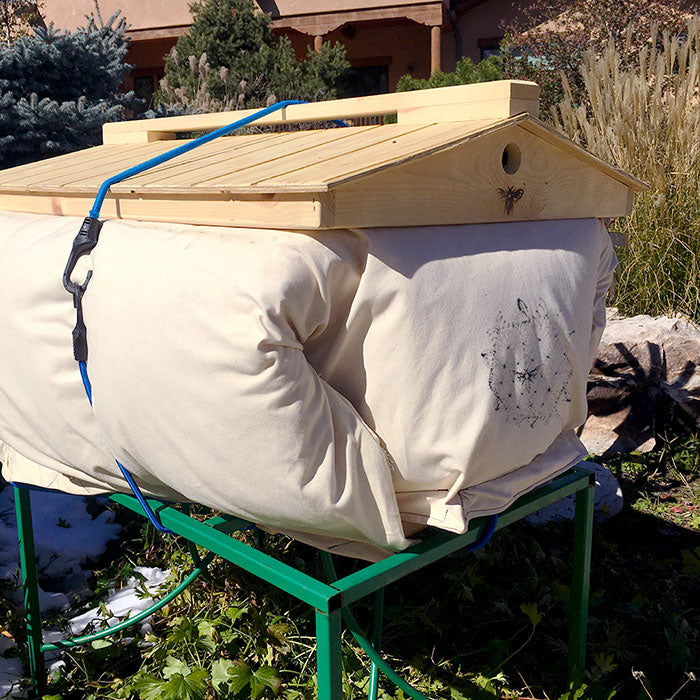
The new Beehive Cozy Cover - insulates like a tree
 Can't put a cottonwood log around our hive for winter? Choose the Cozy Cover instead ;-)
Can't put a cottonwood log around our hive for winter? Choose the Cozy Cover instead ;-)
What we experienced 2017-2018 winter and the winter of 2016-2017 to a lesser degree needs to be a wake up call, bordering on mandatory if you want to get your bees through the winter. Here is the smoking gun. Everything we observed and all the research point to one key shift in the environment, most notably in mid-latitudes. Things are rapidly changing in the global climate and the bees need time to adapt. We need to give our bees a rescue blanket until they can develop adaptive behaviors that can counter the effects of climate change.
The bottom line, bees can handle very cold temperatures, even as cold as the Arctic Circle, but what bees have not yet adapted to is repeated sudden drops in temperature of plus 40 degrees. We have to provide thermal insulation that internally slows the temperature drop in the hive. This buffering gives the bees time to get to the honey stores fill up with honey and then to get into a very organized cluster to stave off the cold. The most amazing thing is that given the right kind of insinuative barrier the bees might not need to go into a cluster at all. In fact, clustering may be an emergency behavior and actually a sign of stress. Think of a big thick tree with a colony of bees in it. That tree colony has thick insulative wood around them and nearly infinite insulation above the nest!
 Bee nest inside a tree hollow
Bee nest inside a tree hollow - Look at all the "R" value the tree provides
We think of
weatherization as the practice of protecting a building and its interior from the elements, particularly from sunlight, precipitation, and wind, and of modifying a building to reduce energy consumption and optimize energy efficiency, but what is most important is the “heat transfer rate” of our hive bodies. Heat
transfer is a measure of how fast the internal temperature changes to that of the outside temperature. Insulation slows down this transfer rate.
Thin walled bee hives are not even close to what a thick walled tree provides. So a as temperatures plummet outside it takes a longer time for that rapid change to effect the honey bee nest, giving the bees ample time to do what they need to do to survive. ie... the tree has a very low heat transfer rate.
Think of this! Most of the bees that died last winter in the US didn't slowly die over the course of the winter, but died in a 24 hour period or died after only a few of these sudden drops in temperature. The good news is this is totally avoidable with either the
Beehive Cozy Cover or a comparable solution. The Cozy Cover provides winter protection very similar to a large tree, while also providing breath-ability, minimizing moisture build up and condensation. Think of modern tents. As you sleep in a tent you give off moisture with your breathing and perspiring. The tent is breathable, it lets that moisture escape through the fabric so the inside wallf of the tent are not dripping wet. The rain fly over the tent protects the breathable tent from rain and the outside cold temperatures cause the moisture to condense on the inside of the rain fly. You stay warm and dry.
When insulating a hive we want to simulate what the bees experience in nature when living inside a hollow of a tree.

Bees living inside a hollow of a cottonwood tree. We have seen bees in this tree for over 4 years, it's amazing!
Winterizing: Lets understand what is causing the "polar vortex” or Flash Freezes and the sudden temperature drops in the US
The polar vortex refers to the counter-clockwise flow of air that normally insures that the colder air stays put near the Poles. The polar vortex in its normal configuration will expand sending cold air southward with the jet stream. This occurs many times during the winter in the northern hemisphere and is usually correlated with arctic air flowing down into the United States, but now the effect is getting abnormally unstable.
Weather anomalies linked to the polar vortex
Recently scientists have identified a relationship with the decline in Arctic sea ice and snow cover with weather anomalies linked to the polar vortex. Basically, when the arctic warms rapidly and the mid-latitudes in the US get colder the jet stream weakens because there is not the big temperature difference to keep the jet stream in its normal place, it begins to waiver and dip deep into the mid-latitudes. When this occurs, a super cold arctic air mass streams directly down into the mid-latitudes, causing sudden drops in temperature.
Two consecutive winters of weather anomalies
After enduring two consecutive years of high honeybee colony losses in the US, attributed to rapid drops in temperature, we could begin to see a serious impact to local agriculture, especially if these extreme climate anomalies continue or deepen. It becomes very hard to catch swarms or split hives or to do research into natural beeekeeping if no one has bees. The cause of these hive deaths have not been linked to the typical colony losses caused by the Varroa mite or pesticides, but to multiple climate events of unprecedented temperature drops in the 40 degree plus range within a very short window of time.
The data we collected
Below is a graph we put together using an algorithm that pulls the number of these 40 degree drops in temperature over several years in Colorado.
In 2008 the front range beekeepers experienced unusually heavy winter losses and we didn't know why. In 2017 very few beekeepers came out of the winter with bees. The ones who did we interviewed to find out why. They all had super-insulated their hives. Most the swarms that we got calls on of were coming from people's warm attics, soffits or feral bees in huge cottonwood trees.
Table 1: Number of days in each year with large temperature variation in short periods of time
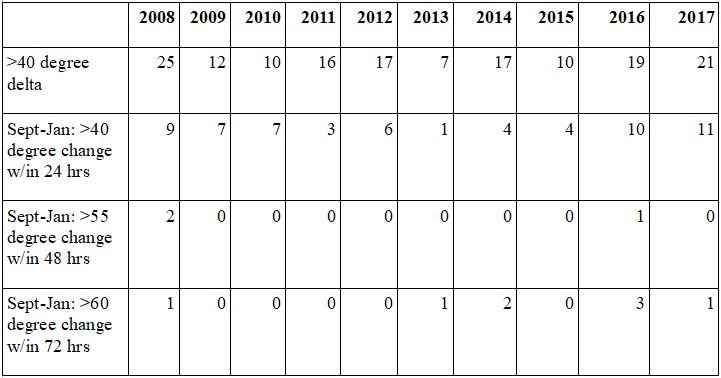
Temperature data collected by NOAA was from Boulder weather monitoring stations
An example of a 65 degree drop was on October 25-27, 2017, which was observed by beekeepers to be the cause of the first big die-off of colonies along the Front Range.

Delta is the difference between two numbers, high and low
The actual fall in temperature starts from 84.9 degrees F and drops to 19.9 degrees F in less then 36 hours.
Accumulative Effects
Each of these events have accumulative effects on the winter colony. A weak colony will die after the first event. Strong colonies will have big losses of numbers after each event, but when even a strong colony looses sufficient numbers they drop below the critical mass of bees needed to sustain the temperature of the cluster. So each of these events have a huge impact on the bees survival chances.
Temperature Changes Graphed
Sept 2017 through March 2018 winter bee season have been the most severe since 2008/09
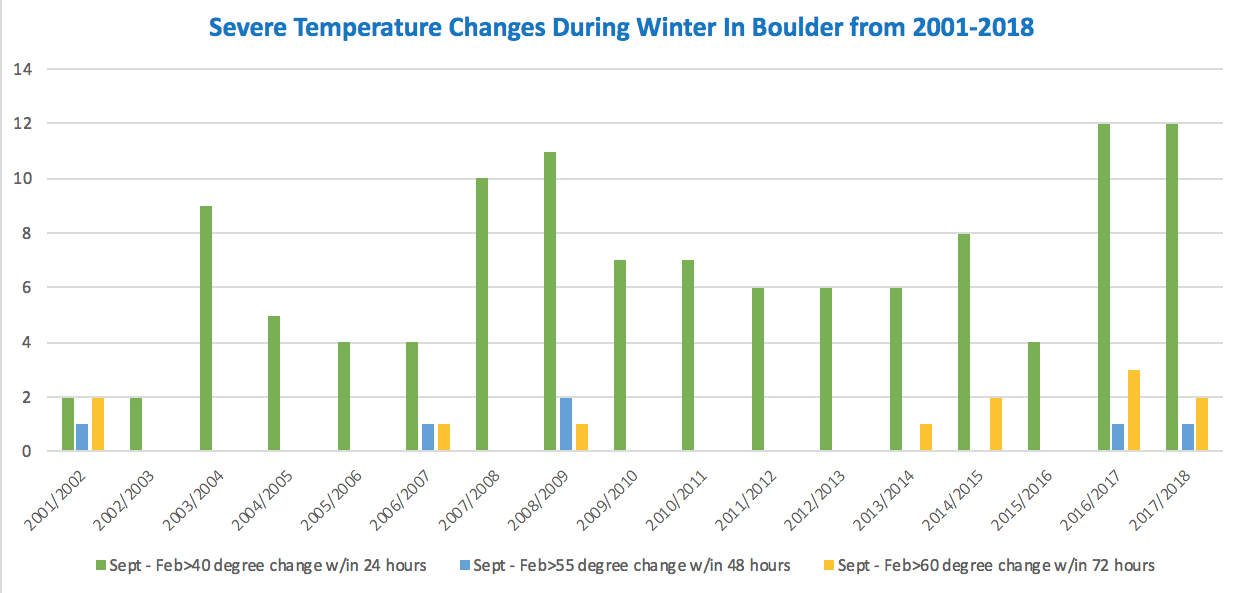
Data from Boulder, CO weather station- NOAA Boulder Station ID: GHCND:USC00050848 Coordinates: 39.9919N, 105.2667W, 1671.5 meters above mean sea level
Why do bees have difficulties with extreme and rapid temperature drops?
Genetic behaviors determine the colonies ability to respond and survive extreme temperature anomalies.
Here is the very simplified example of behavioral mechanics needed for a colony of bees to survive a typical extreme drop in temperature.
1) Colony needs to quickly organize and assemble within the honey stores of the nest to consume honey stores. this serves at fuel. As the bees shimmer their wing muscles they generate heat.
2) Bees need to consume and store in their honey stomachs a predicted amount of fuel (honey). The predicted amount would be based on typical historical normal's.
3) After securing fuel the colony needs to reassemble in the brood chamber before the temperature in the hive drops so much that the mobility of the bees is affected. The "passage holes" in the bars aid in this migration.
4) The colony must now organize into a formation called a "cluster" where half of the bees are head first in empty insulative wax comb cells and the other half of the bees are covering the open cell of their hive-mates with their thorax. The cluster then begins shimmering their wing muscles which starts the heating of the bee cluster. The bees then switch places.
The amount of honey each bee has or was able to consume would have to be well calculated and would need to be based on surviving a typical, but still relatively extreme, historical 40 degree drop in temperature. If the bees are “programmed” genetically to prepare for a typical temperature drop rate of around 40 degrees in 24 hours, the bees would have survived the event perfectly. On the other hand, if there are multiple events or a single event that is an unprecedented 40 degree plus change, then the colony will likely run out of what they collected in their honey stomachs and perish.
Proper insulation on a hive decelerates or extends the fall in temperature allowing the colony to respond effectively.

Solution: Mimic the bees natural enclosure

Bee nest inside a tree hollow
In a recent study, researcher Derek Mitchell used thermal mass calculations rather the R value to demonstrate the “heat transfer” or loss of heat from a tree nest compared to a typical man-made hive. Typical bee hives were shown to lose four to seven times more heat then a colony residing in a tree.
“Many honey bee behaviors previously thought to be intrinsic may only be a coping mechanism for human intervention; for example clustering in a tree enclosure may be an optional, rare, heat conservation behavior for established colonies, rather than the compulsory, frequent, life-saving behavior that is in the hives in common use. The implied improved survival in hives with thermal properties of tree nests may help to solve some of the problems honey bees are currently facing in agriculture.” Derek Mitchell
The final publication is available at Springer via http://dx.doi.org/10.1007/s00484-015-1057-z
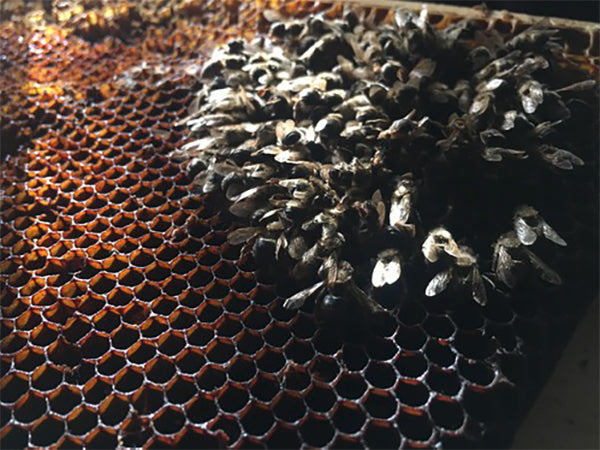
Bees clustered on a comb inside a hive, they didn't survive. Likely due to lack of insulation on their hive.
The insulation debate and confusion seems to dwindle when you just go back and look at the properties of the bees original nest, the tree. Having seen first hand that most hives that die over winter have plenty of winter stores, then, the debate that insulated bee hives causes the bees to be too active and eat up all their stores falls apart. In fact, the bees died because they couldn't migrate to the honey stores because it was to darn cold in the hive to move. An article from Bee Source Magazine states.
"There are a few standard arguments often advanced against insulating. The first being that insulation will make bees more active at times and use more stores while they’re moving around- and that’s true. An important thermology study of wintering bees7 concluded that colonies with insulation have more relaxed clusters, and, therefore, bees have the ability to move around more when compared to uninsulated colonies. But that only allows bees to have greater access to stores and avoid starvation. To the contrary, it’s not uncommon to observe that a starved colony left behind plenty of honey because it was just too cold for the cluster to move and consume them." William Hesbach
The Beehive Cozy Cover: a very effective winterizing solution
After seeing the massive losses last winter all over the country we were determined to find a solution and give bees a chance to make it over the winter. In the process of trying to understand what was happening and with many of days of research, talking to experts about insulation, breath-ability, humidity and condensation, we discovered some very important concepts about weatherization. After several prototypes, testing and then more prototypes, we now have in production a very effective winterizing solution to protect your bees. Introducing the
Beehive Cozy Cover. In creating the Cozy Cover we sought to understand the bees in context to their original nest enclosure, the tree.
How the new Cozy Cover creates a natural cavity for the bees.
Our design criteria for the creation
Beehive Cozy Cover was to mimic, as closely as possible, the hive nest of bees in the wild. Bees generally select nests in deciduous trees of a particular diameter and thickness. The trees that best match the bee's criteria is the cottonwood tree here in Colorado. Having observed many wild bee hives in trees and rescued several bees nests that have been cut down, I found that there is typically at least a thickness of 8 to 10 inches of wood surrounding the nest.
 A top bar hive 'wrapped' in a cottonwood tree. survived 5 Winters in Carbondale CO
A top bar hive 'wrapped' in a cottonwood tree. survived 5 Winters in Carbondale CO
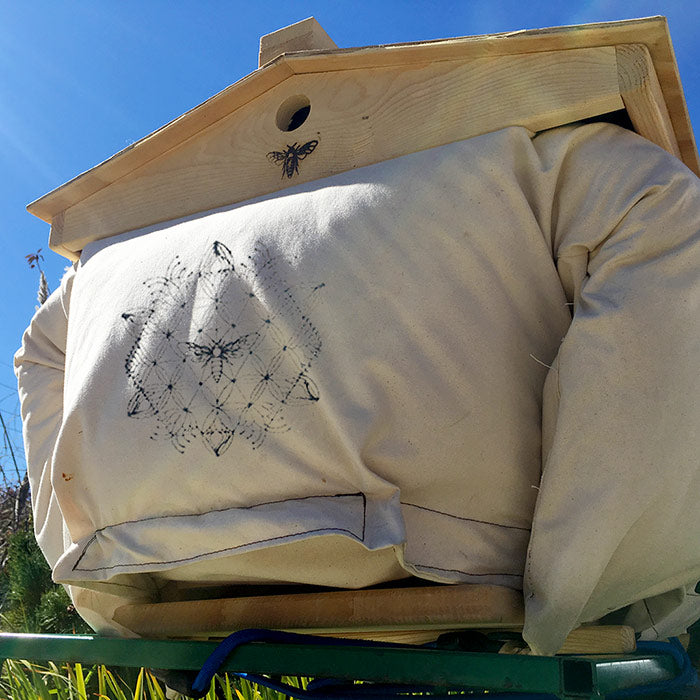
The R-value for wood ranges between 1.41 per inch (2.54 cm) for most softwoods and 0.71 for most hardwoods (R-value is a measure of insulating ability of a material or thermal conductivity). Cottonwood is a soft wood, so if your calculating the insulating ability of cottonwood at four inches, you get an R-value of 5.6. The 1 inch thick blue board insulation panels have an R-value of 5.0 . If you add the thickness of the 7/8 pine wood of a typical hive, you can add an approximate R-value of .71 (virtually nothing) to insulation panels making a total R-Value of your bee hive 5.71. So, with 1" foam blue board we are providing the bees with a small diameter tree with 4 inches of wood around them, but this is still not quite a direct comparison because the tree hive has a huge amount of insulation above and below.
More insulative power than blue board
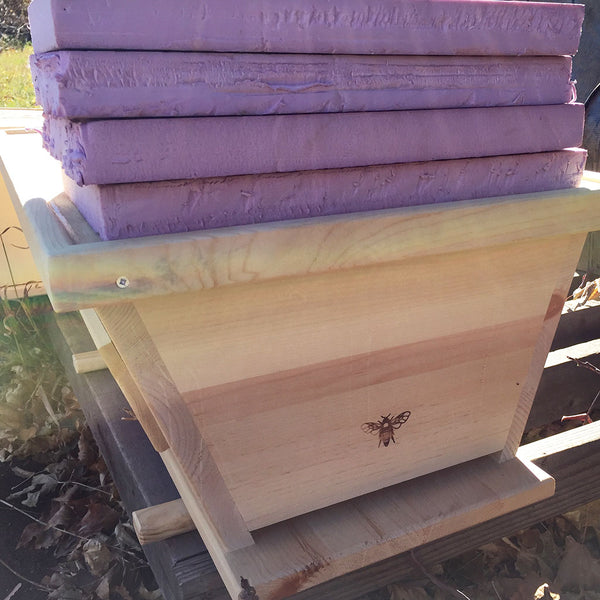
So you can see if you refer back to the bar graph that the blue board panels of an inch worked fine for many years when there were just a few of the polar events, but now that the environment is changing, insulating with blue board only is just not sufficient, we need to be bundling up our hive for winter in a big cottonwood tree. We now need higher R values and better insulation properties.One board of ridged 1 1/2 inch foam has an R value of 7.5, One layer of Wool has an R value also of 7.5. Wool allows moisture to escape, where Foam insulation is typically considered the vapor barrier. Three layers of wool insulation is R22.5 this is the equivalent to a tree with 18 inches around a tree nest!
Now we are talking ! If you insulate now with foam board then two layers of wool would be great.
Thermal properties of wool

We worked with Andrew Legge owner of
Havelock Wool to find the best of natures insulation capabilities. Wool is by far the best way to insulate a bee hive.
*Moisture and climate control – moisture and mold happens in your walls. Wool absorbs and adsorbs it against 65% relative humidity.
*Suppresses mold and mildew – natural keratin prevents against the spread of mold and mildew.
*Absorbs sound – wool exceeds other forms of insulation as an acoustic buffer.
*Thermal conductivity – wool batts are industry standard at 3.6 per inch
*All natural – wool insulation is entirely renewable and sustainable
*Long lasting – inherent characteristics allow stated R-values to exceed other forms of insulation.
*No off-gassing – natural characteristics make our insulation devoid of harmful chemicals.
*Installs easily – batts are installed like other mediums but with no protection required.
Wool is biodegradable and compostable.
So why isn't everyone using wool to insulate? The simple answer is cost and how to keep wool dry without putting it in a plastic bag, the
Beehive Cozy Cover solves this. Natural insulation of wool is the best thing for the bees and the argument of cost is also starting to sound silly when we are talking about keeping bees alive.
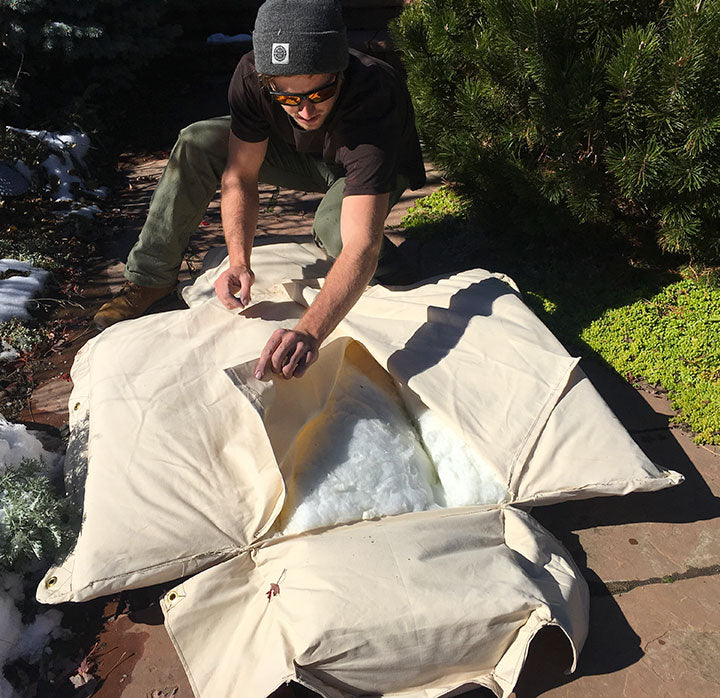
The Wool Insulation batts fit perfectly into the Cozy Cover
You have the facts now get the solution.
Buy the new Beehive Cozy Cover
The Beehive Cozy Cover is the ultimate solution to overwintering your bees. The only thing you could do better is to keep your bees inside a tree.
* 100 % natural materials for the bees
* Watertight, Breathable, UV resistant Cotton Canvas
* Natural Wool from New Zealand is breathable, has superior R values & biodegradable
* Wool inherently manages moisture and eliminates condensation
* Four insulation pockets that securely hold insulation
* Wrap around wind and draft flaps
* The entrance has a sewn in drip edge
* Bungees included for a secure fit to your hive
* Simple & Easy to install
* Silk Screen design by Corwin Bell and hand screened by him
* Use in addition to our Insulation Panels - If you have our Insulation Panels adding a Cozy Cover with 2 layers of wool will equal R20
* Fits all hives, the Golden Mean, Original BackYardHive, Cathedral Hive
AND most popular top bar hives!
Options:
* Cozy Cover only - source your own insulation
* Cozy Cover with Wool Insulation


Give your bees a warm hug with the Beehive Cozy Cover!
Also watch the video with Corwin talking more about winter insulation our
Bee Guardian video on our home page.What is R Value?R value is the capacity of an insulating material to resist heat flow. The higher the R-value, the greater the insulating power. In cold climates we are trying to get to R15 or R22. Most man-made beehives are made from 1/2'-1" inch wood, the wood has an approximate R Value of 1, virtually nothing !
Can't I just use more foam board ?Yes, but to reach the R value of a good tree hive nest or layers of wool, you would have to stack 3 Layers of 1 1/2 inch ridged pink foam board R around your hive, if your hive is in one of the colder hardiness zones 3-5.
How does 100% wool stack up against ridged foam board?One board of ridged 1 1/2 inch foam has an R value of 7.5, One layer of Wool has an R value also of 7.5. Wool allows moisture to escape, where Foam insulation is typically considered the vapor barrier.
Does insulation cause my hive to heat up?No, insulation only retains heat and the bees are in complete control of how they heat the hive nest, they just don't have to work so hard if the heat they do generate isn't transferring to the outside but is kept inside their hive by using insulation.
More pictures of natural bee hives
 Brook's clever idea to cover up the bee cavity in the tree! A good use as any for a pie pan !
Brook's clever idea to cover up the bee cavity in the tree! A good use as any for a pie pan !

Wild bees living inside a cottonwood tree hollow
It can bee hard to spot wild bees in a tree when out for a hike. The key is to look towards the sun to spot the tiny flashes of bees buzzing into the hole.
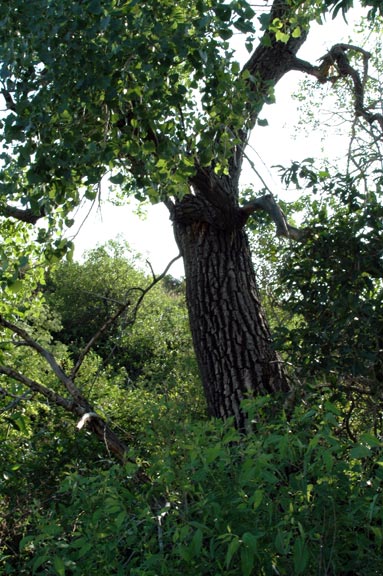
This is the tree that has the wild bees inside. Just passing by you might miss them but look for the old cottonwood trees that are more likely to have a hollow cavity inside.
 What's missing from this hive? A Beehive Cozy Cover for winter!
What's missing from this hive? A Beehive Cozy Cover for winter!
Related Articles:
Winterizing and Insulating Your Bee Hive - read more about winterizing your hive, moving the falseback forward, accessing the honey stores and when to put on the insulation panels.
Harvesting Honey from a Top Bar Hive - learn more about thermal mass and how the bees use combs of honey as fuel to create thermal heat.
SaveSave 

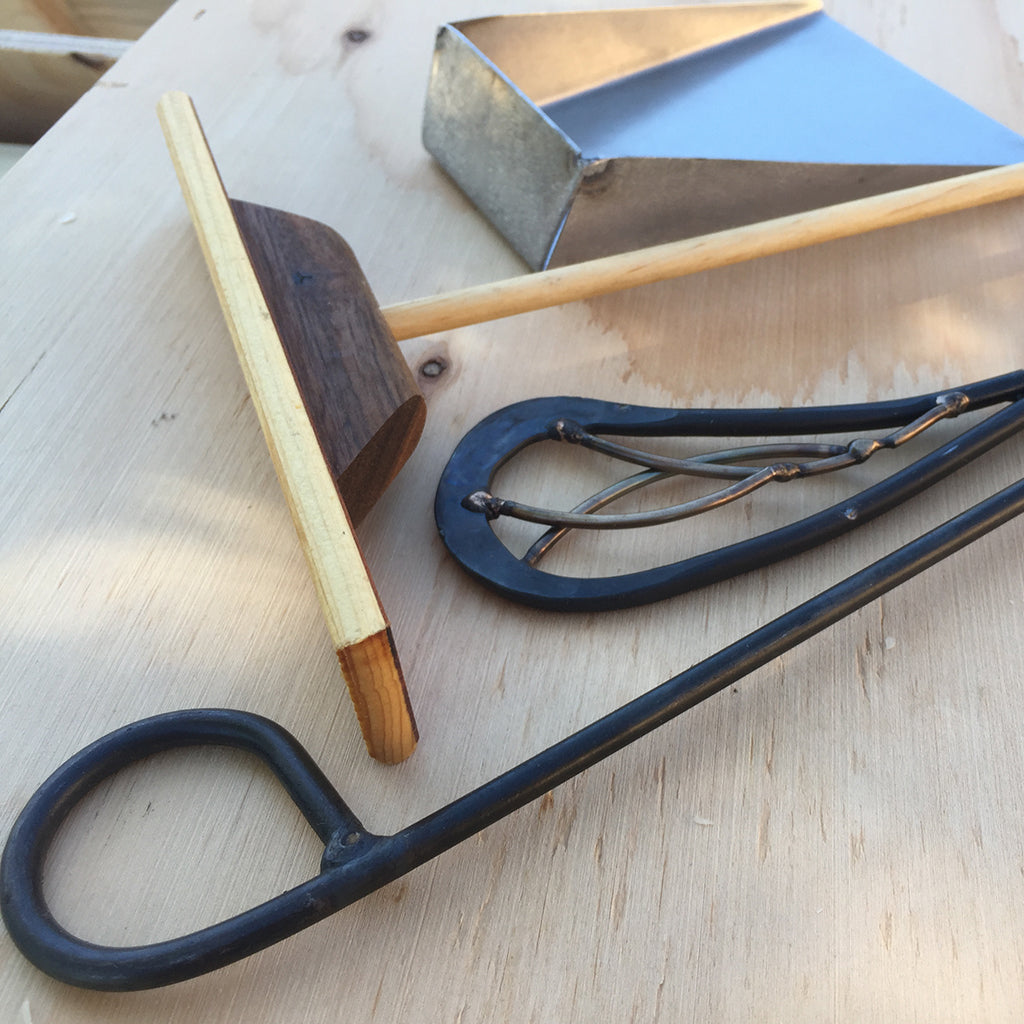
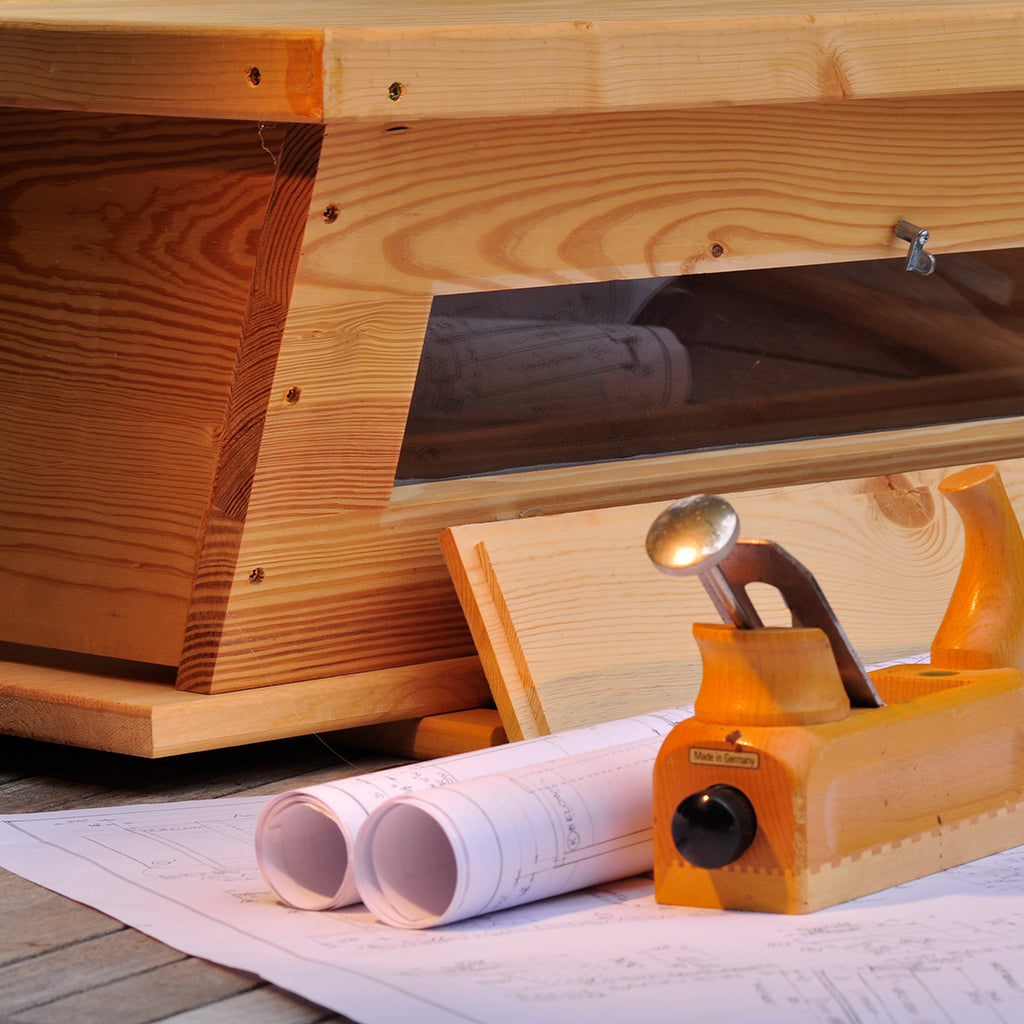
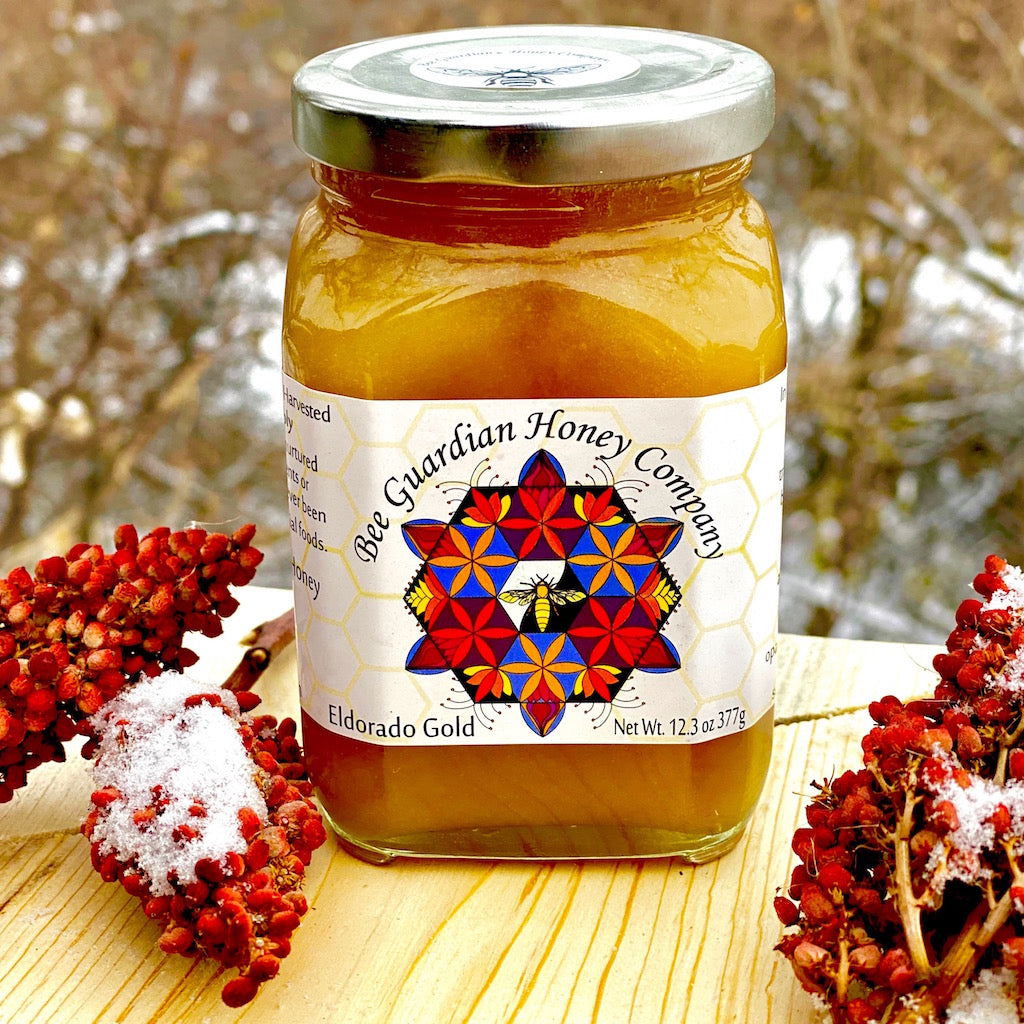
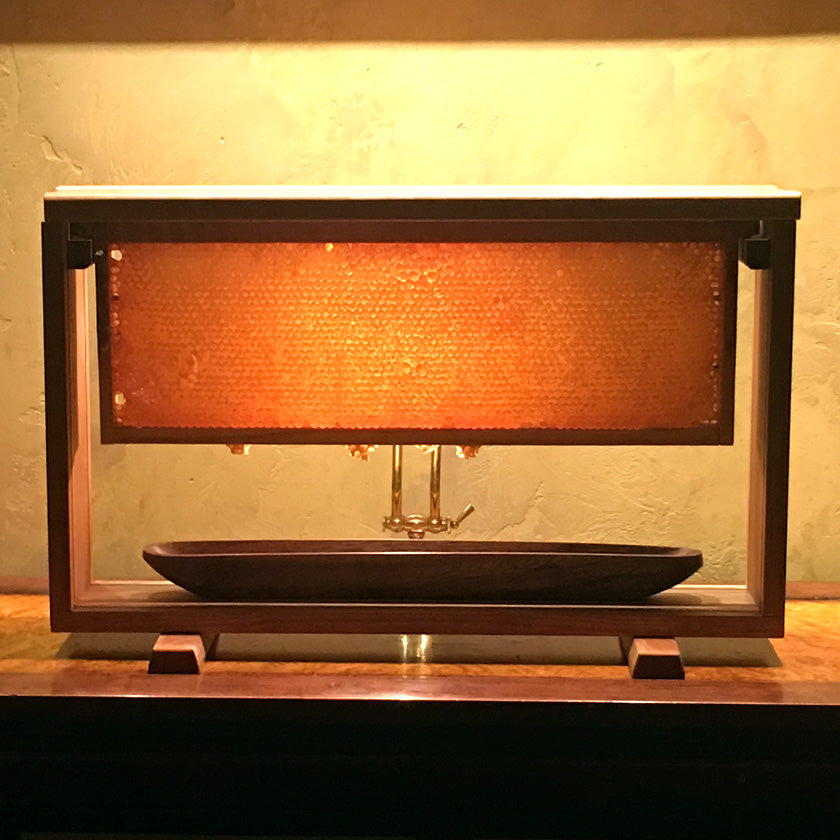
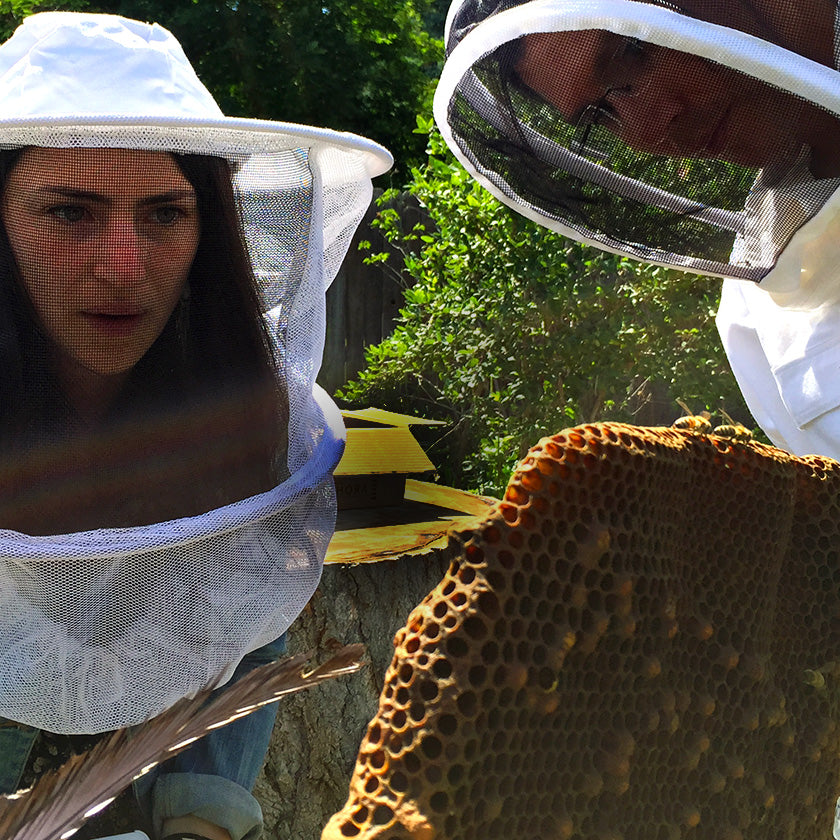
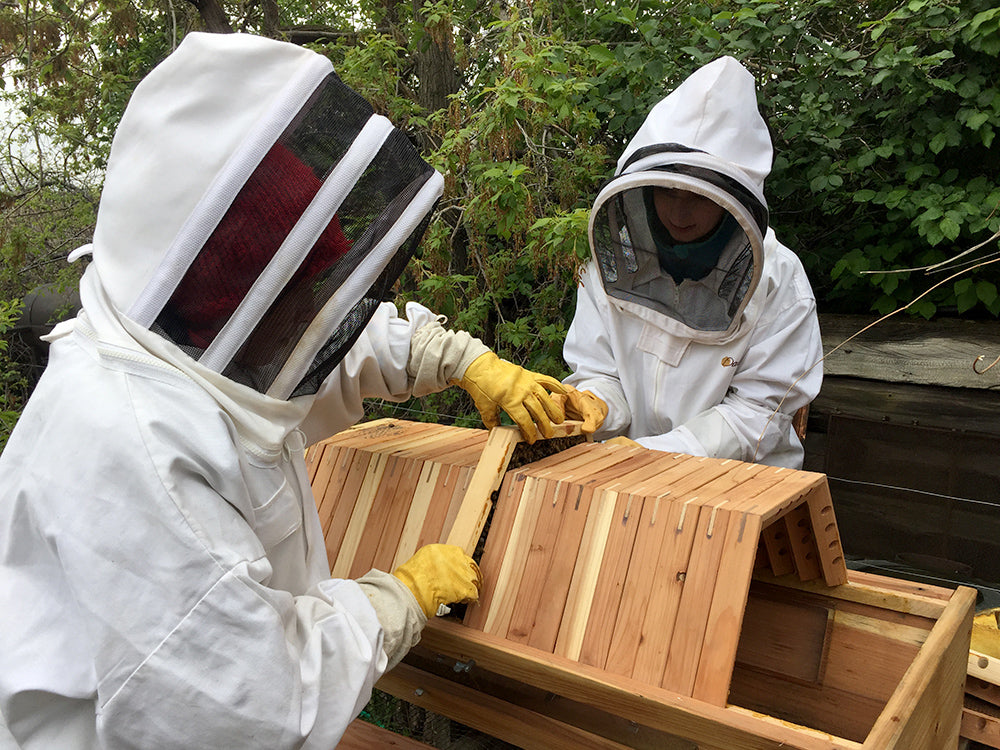
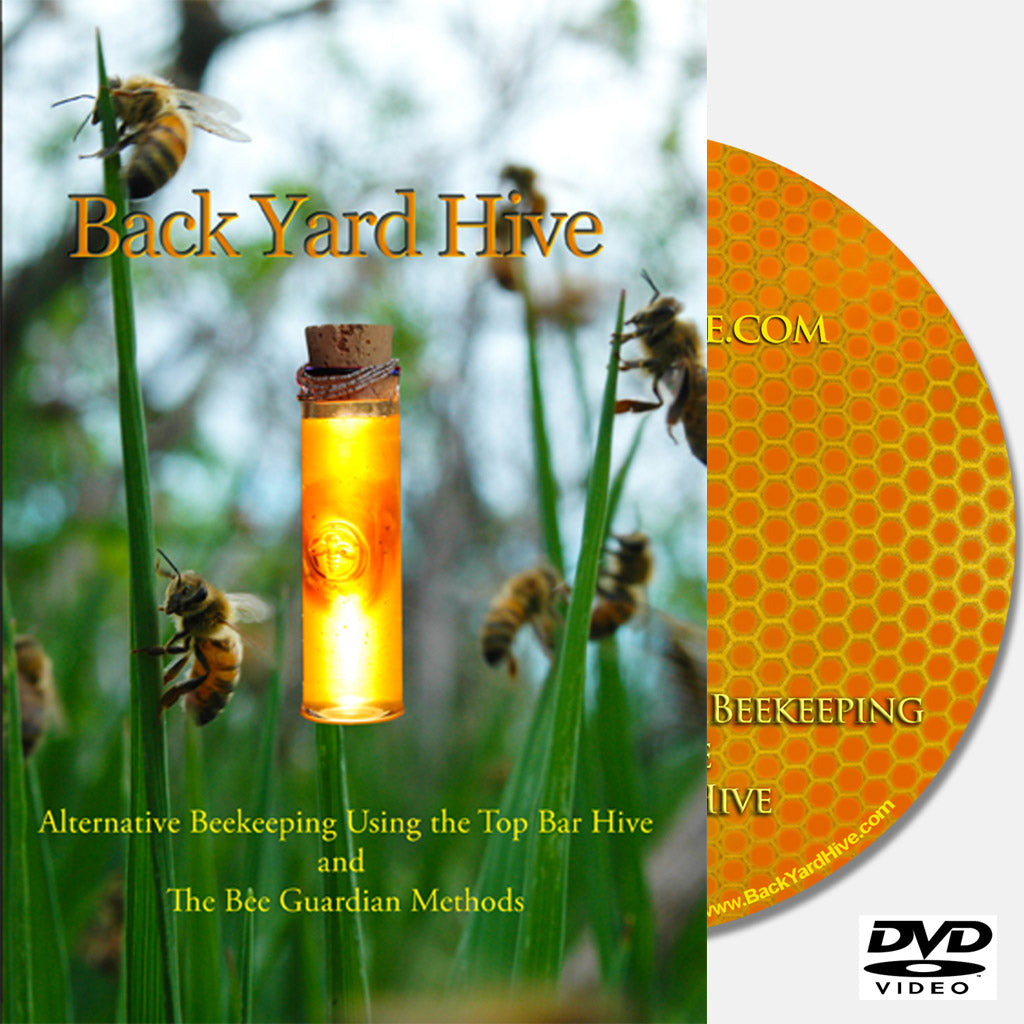


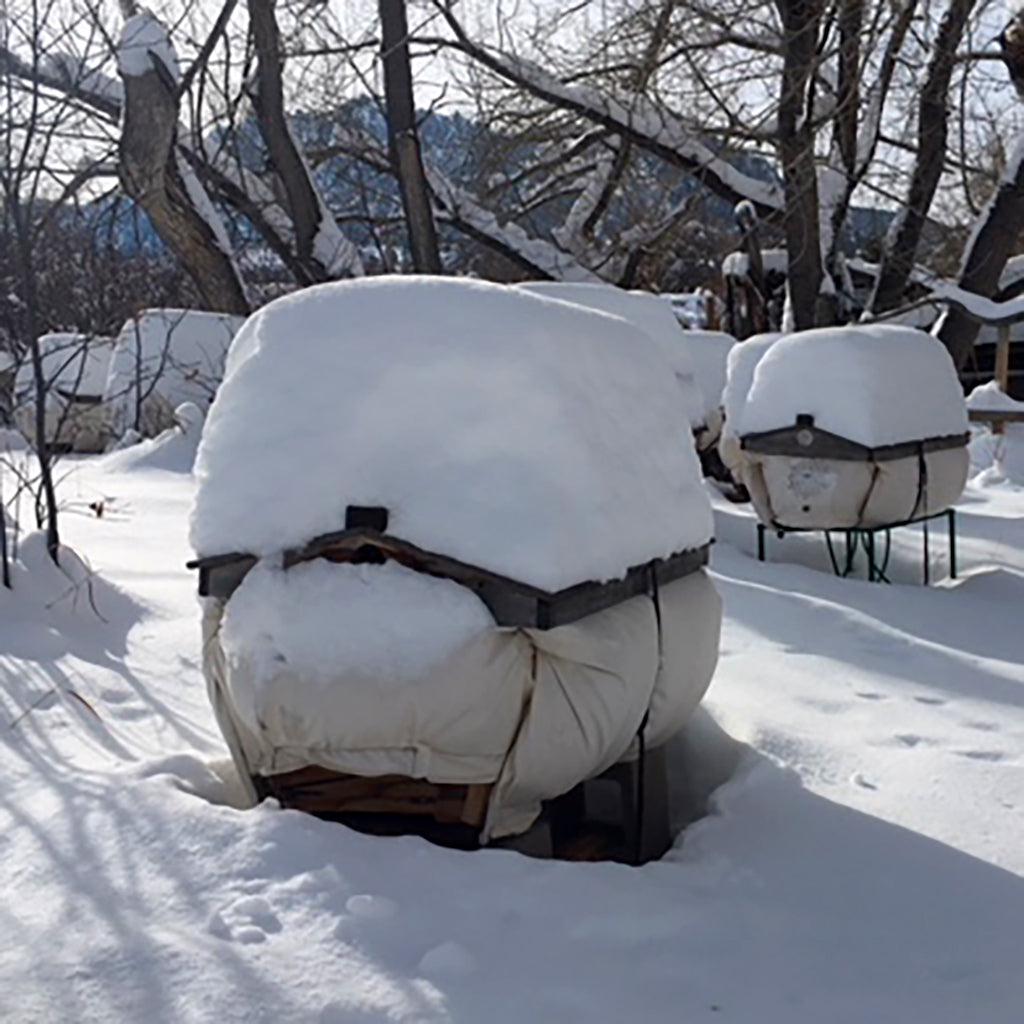
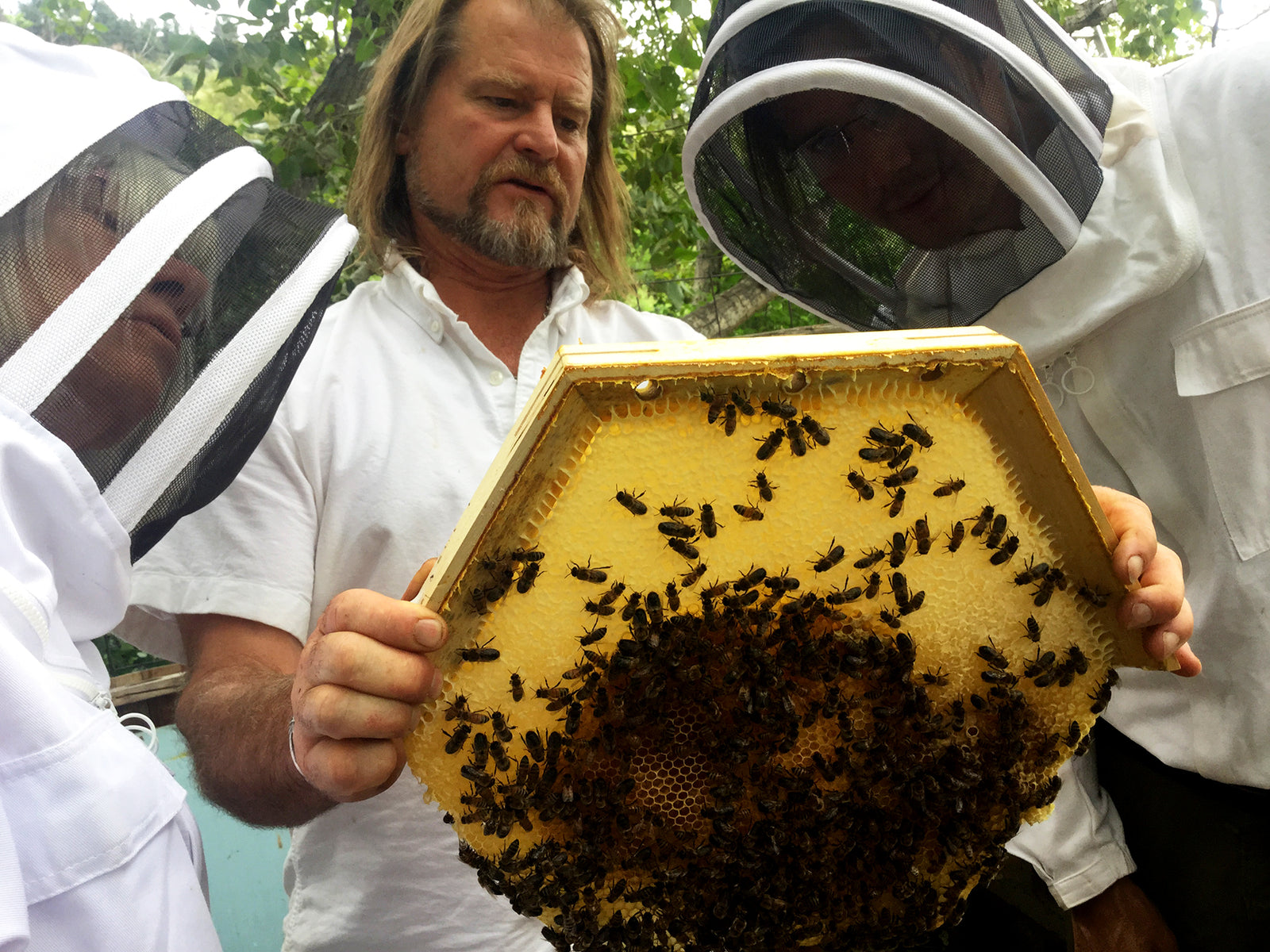


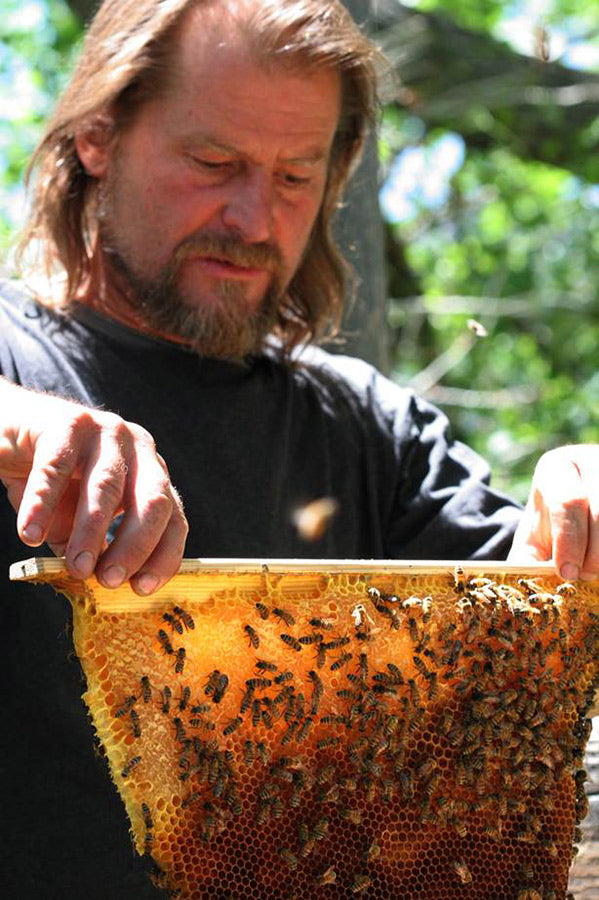


 Can't put a cottonwood log around our hive for winter? Choose the Cozy Cover instead ;-)
Can't put a cottonwood log around our hive for winter? Choose the Cozy Cover instead ;-) Bee nest inside a tree hollow - Look at all the "R" value the tree provides
Bee nest inside a tree hollow - Look at all the "R" value the tree provides 






 A top bar hive 'wrapped' in a cottonwood tree. survived 5 Winters in Carbondale CO
A top bar hive 'wrapped' in a cottonwood tree. survived 5 Winters in Carbondale CO





 Brook's clever idea to cover up the bee cavity in the tree! A good use as any for a pie pan !
Brook's clever idea to cover up the bee cavity in the tree! A good use as any for a pie pan !

 What's missing from this hive? A Beehive Cozy Cover for winter!
What's missing from this hive? A Beehive Cozy Cover for winter!